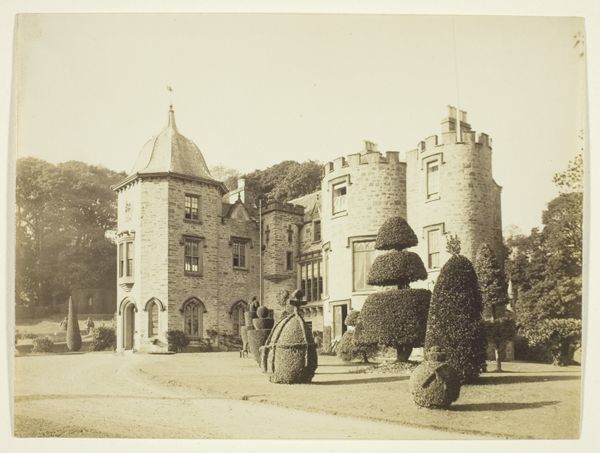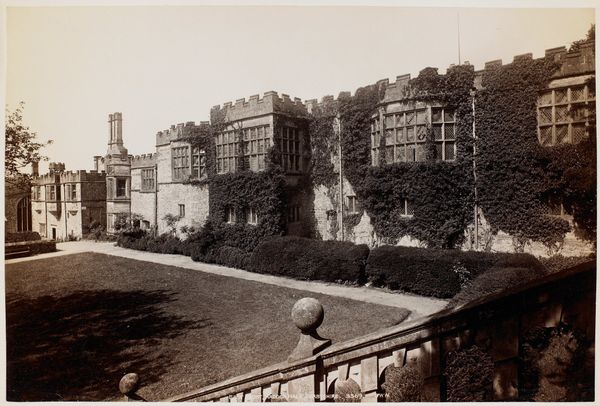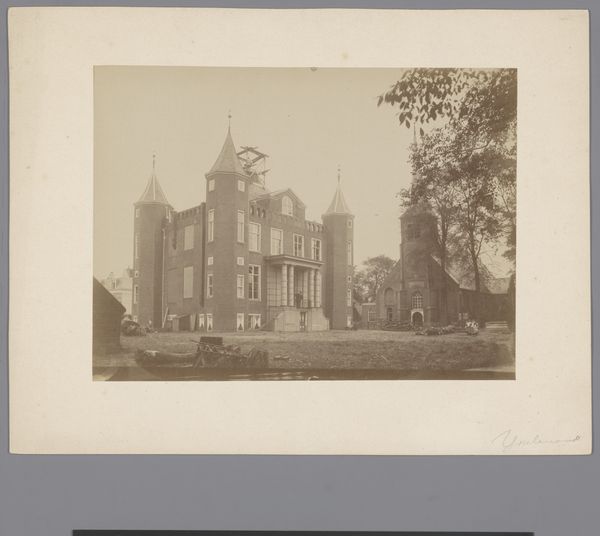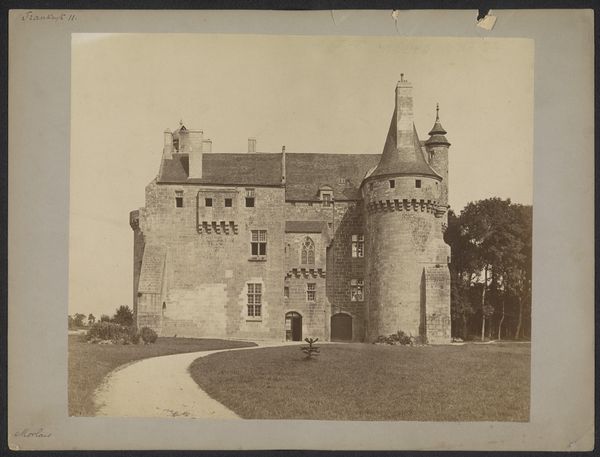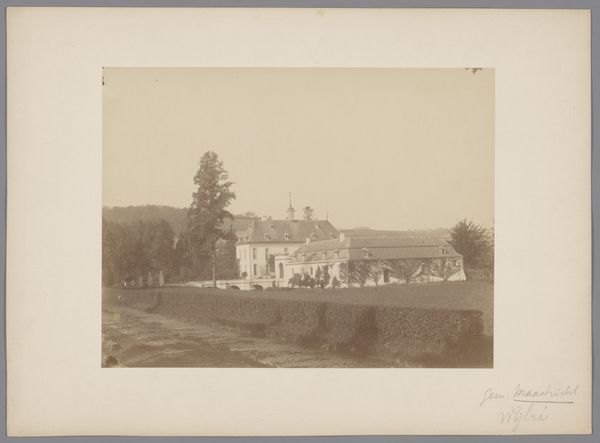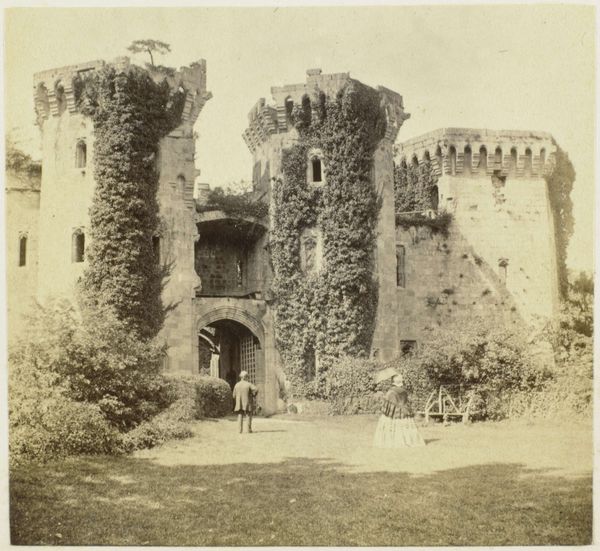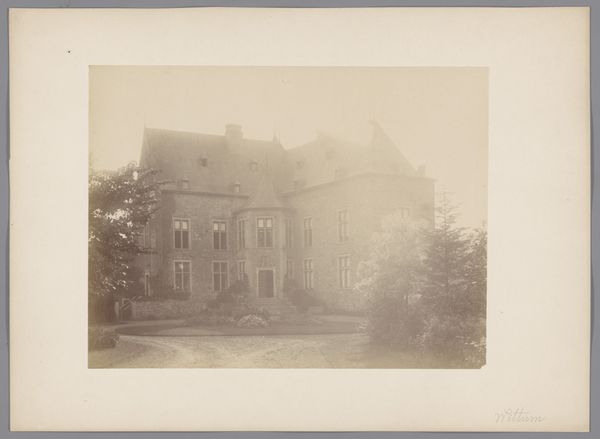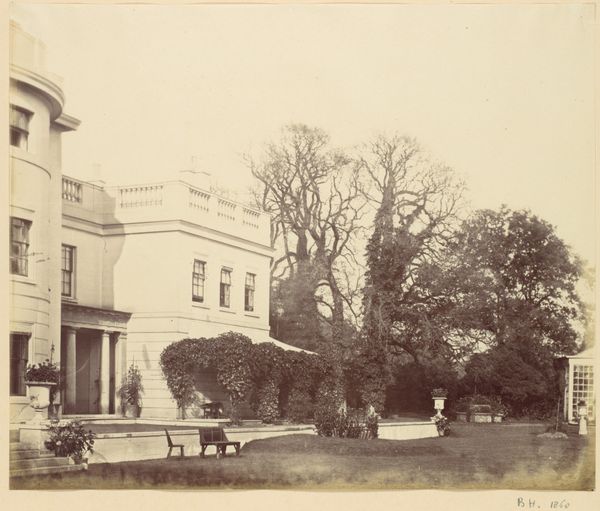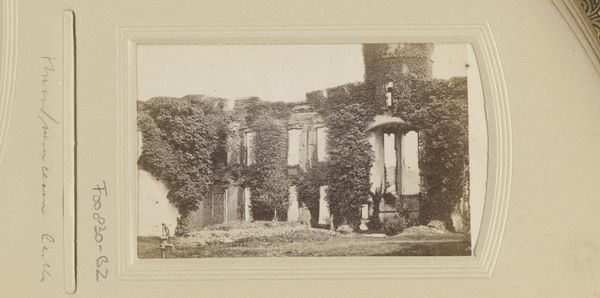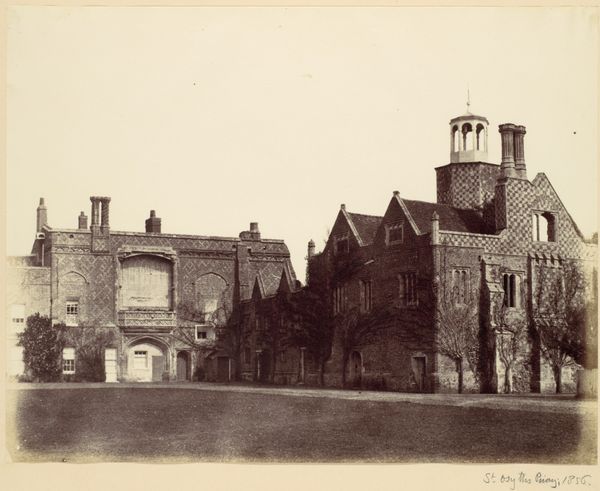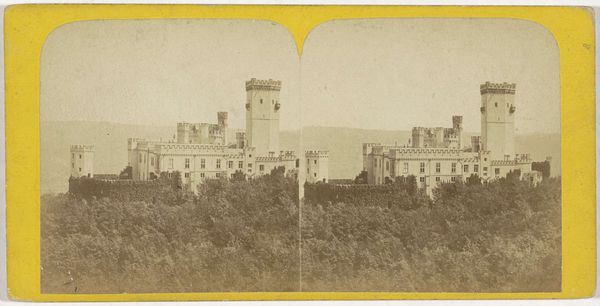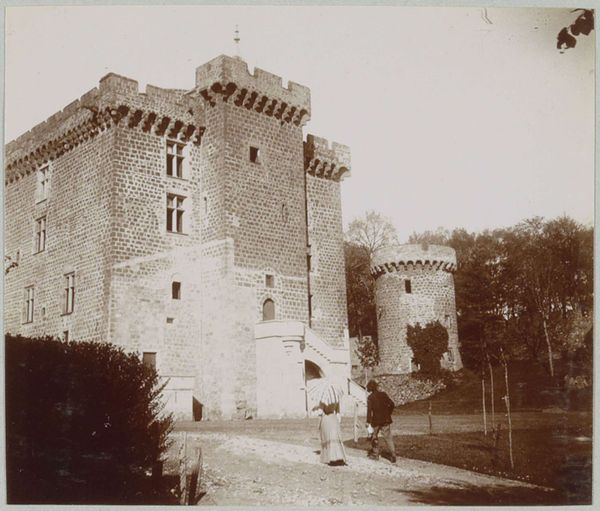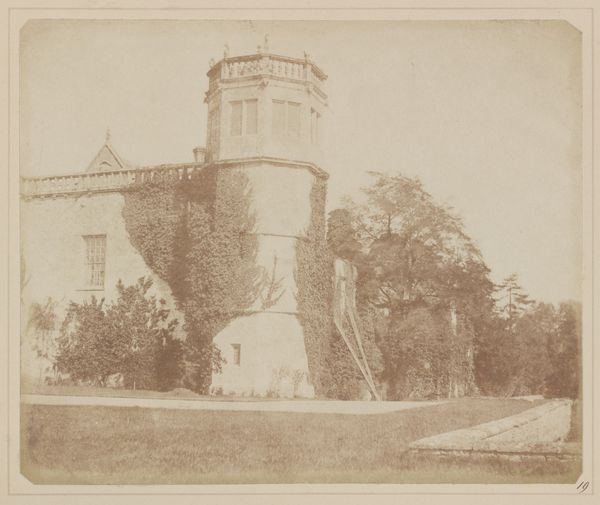
Untitled (The Corner House, built by Norman Shaw, side view) 1869
0:00
0:00
Dimensions: 13.7 × 19.3 cm (image/paper)
Copyright: Public Domain
Curator: Let's consider this photographic print currently at The Art Institute of Chicago, dating back to 1869. It's simply titled "Untitled (The Corner House, built by Norman Shaw, side view)." Editor: My initial response is of order and constraint. The house itself is sturdy, imposing, but the meticulously manicured landscaping—those rigid, almost comical topiaries—give it a slightly surreal, unsettling atmosphere. Curator: Precisely. Consider the historical context. The 19th century saw rigid social structures mirroring the ordered composition. Houses such as these reinforced class distinctions, controlling not just space, but societal roles. How do you see the artist operating within that system? Editor: Formally, I note the exquisite gradation in the silver gelatin print itself. The tonal range lends depth and weight to the building's facade. Notice the emphasis on texture—the rough stonework, offset by the smooth lines of the manicured garden. The semiotics here feel very intentional. Curator: Definitely. And the photograph, by an anonymous photographer, itself raises interesting questions of access and agency. Who has the power to document, to frame these spaces and subsequently influence their reception? Was the very act of photographing reserved for certain genders, races or economic positions? Editor: But it's the visual syntax that's compelling. The placement of the building is strategic; the angle, the shadow play that invites us to analyze planes within planes, the relationships within shapes. It transcends its subject. Curator: Yet we cannot disentangle that architectural presence from its symbolic weight. How do we, as modern viewers, contend with that heritage? What are our responsibilities in interrogating those spaces, photographically memorialized? How has our understanding evolved beyond that singular 19th-century perspective? Editor: It does make one think, reflecting on both the aesthetics and politics represented, a delicate balance. Curator: Absolutely, a balance that keeps art both visually interesting and historically thoughtful.
Comments
No comments
Be the first to comment and join the conversation on the ultimate creative platform.
